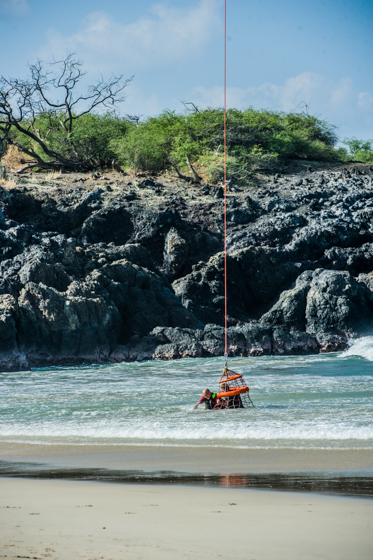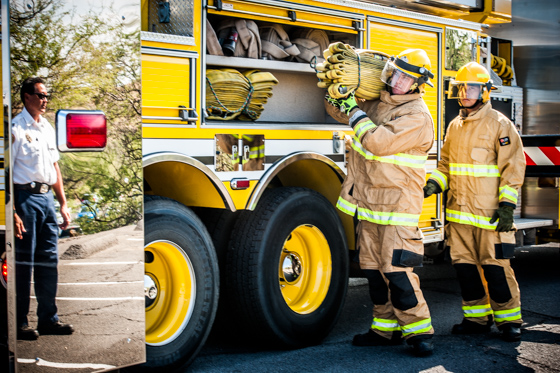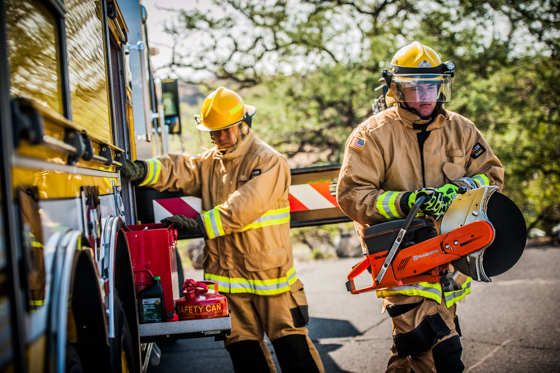
During my recent trip to Hawaii I spent time with the County of Hawaii Fire Department. Working so much with the departments in the deserts of Arizona, I was thrilled to have the opportunity to photograph some ocean rescue and recovery techniques and equipment that were new to me.
Turnouts and ladder trucks are necessary, of course. Some things are inherent in the name firefighter. As in most U.S. fire departments 70-80% of calls Hawaii FD responds to are medical in nature; 3% of their calls are to brush or structure fires.
I wanted to focus on the training and equipment that sets Hawaii FD apart from most others. Surrounded by ocean, their playbook requires a serious element of water-related skills! Thank you to the men and women of The County of Hawaii Fire Department for coming out to show us a slice of what you do for your island and community.
(In 2015 Hawaii FD responded to 632 ocean rescue calls alone. (450 crew members on the island; 51 are non-firefighter Lifeguards that patrol the beaches on land and in the water. Roster of crew for this shoot is listed at the end of this article.)
John Creekmur, Hawaii FD, sets out to do some patrolling of the waters along Punalu'u Beach on the Big Island, known also as the Black Sand Beach.
While John patrols the waters Jesse Wakana radios dispatch to update them on the status of the area. The Lifeguards use hand signals to communicate with their partners on the beach and also in the tower. They review signals frequently with their partners to ensure they understand each signal and what they represents. This is a critical element to providing safety assistance to potential victims.
HFD issues rescue boards to the Lifeguards; boards vary but they typically use the soft top boards with handles on both side rails. The rails allow for victims to securely grab hold of the board while being paddled in to safety by the Lifeguard. The sizes vary from 10’6” to 12” boards. The rescue board is used in most situations unless there are multiple victims.
Some offices are just more beautiful than others! These well-trained Lifeguards are issued Xcel UV protection garments (uniform shorts are from Maui Rippers) and DaFin surf fins to do their job. They are also issued masks and snorkels purchased from a local dealer and foam rescue tubes with the brass ring. Sunglasses and sunscreen are also a must in their issued PPE (Personal Protection Equipment.) Not pictured here: Patagonia jackets and Olukai footwear round out the gear they need to do their jobs safely and effectively.
Patrols may go safely one minute and go wrong the next. Rescue operations all start with a victim...
One of the tools of an ocean rescue crew, like Hawaii Fire, is the wave runner. Different from a standard jet ski, these are also equipped with a back platform with handles for victims to grab hold while being brought back to land. Here on Hapuna Beach, Hawaii Fire uses the 2015 Yamaha Waverunner and operators are issued wetsuits, helmets, footwear, cell phones and radios.
Hawaii Fire Department Water Safety Officer II Robin Fasciano pilots the wave runner; Water Safety Officer II Jason Freitas on back ready to pull the mock victim to safety during a training photo shoot.
Pilot Paul Darryl brings the helicopter close to the victim needing water rescue. Hawaii FD uses the Hughes MD 500 for rescues and a Bell Ranger aeromedical helicopter that is used for medical transport and can also be configured and used for rescue situations.
Fire Rescue Specialist James Wilson prepares to jump into the surf for the next phase of the rescue operation.
No fire department is complete, of course, without a ladder truck. While structure fire are few and far between on the Big Island, the ladder can be used for a higher vantage point when they do occur.
On land Battalion Chief Gerald Kosaki, our leader and liaison with Hawaii FD, and Fire Fighters Christian Cook and Benjamin Powers during our couple of days with the County of Hawaii Fire Department.
Big thanks to Big Island Fire Chief Darren Rosario and the County of Hawaii Fire Department for having me out to watch your men and women at work. Very special thanks to Battalion Chief Gerald Kosaki for all of the hard work securing the last-minute permits and blessings from the Department of Land and Natural Resources and the County of Hawaii Council! Thank you to both entities for allowing us to play while promoting your fire department to our followers. We are looking forward to our next visit and the opportunity to feature the mountain and swift water rescue element of your work!
The biggest THANK YOU to the men and women of the County of Hawaii Fire Department who work hard to serve your community! The surroundings might be paradise but the job is just as challenging. (Your office is still pretty sweet!) You have our utmost respect and admiration. MAHALO!!
At Punalu’u Black Sand Beach:
Jesse Wakana on land / radio, John Creekmur on rescue board. Station 8 Lifeguards.
At Hapuna Beach:
Battalion Chief Gerald Kosaki
Captain Sean Sommers
Fire Equipment Operator Wesley Juvik
Fire Rescue Specialist James Wilson
Fire Medical Specialist Kilipaki Kanae
Fire Fighter Christian Cook
Fire Fighter Matt Loper
Fire Fighter Benjamin Powers
Fire Fighter Recruit Justin Lee
Fire Fighter Recruit Tanya-Jo Moller
Water Safety Officer III Jason Nixon
Water Safety Officer II Jason Freitas
Water Safety Officer II Robin Fasciano
Pilot Paul Darryl
Thank you Lt. Tommy Shopay, Hawaii PD, for making the introductions to Hawaii Fire and for your service to your community!
I am text block. Click edit button to change this text. Lorem ipsum dolor sit amet, consectetur adipiscing elit. Ut elit tellus, luctus nec ullamcorper mattis, pulvinar dapibus leo.
















































